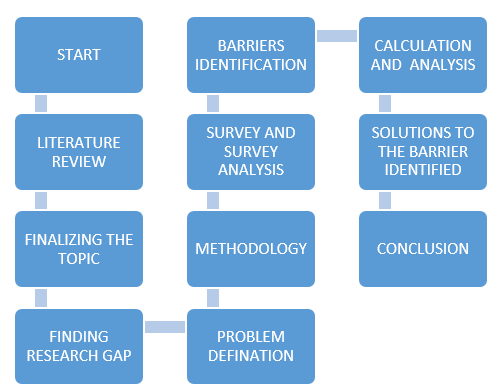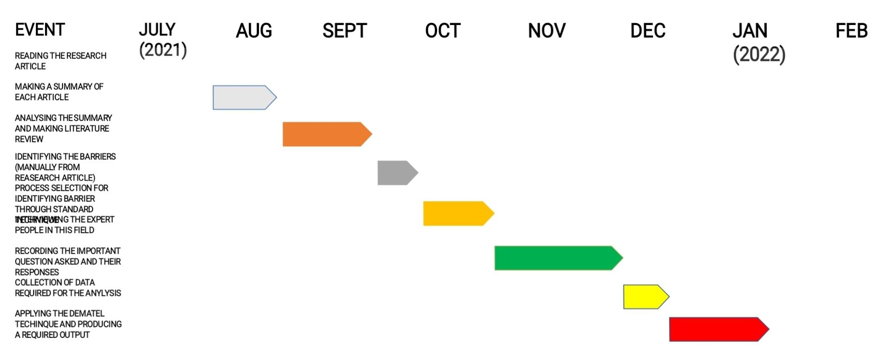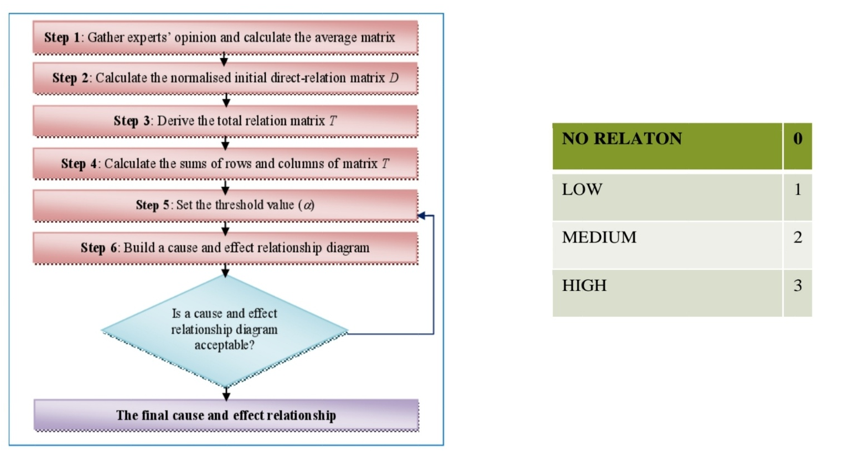Ijraset Journal For Research in Applied Science and Engineering Technology
- Home / Ijraset
- On This Page
- Abstract
- Introduction
- Conclusion
- References
- Copyright
Adoption of Electrical Vehicles in India
Authors: Sumedh Bhavsar, Saurav Gaikwad, Vedant Patil, Abdul Bari
DOI Link: https://doi.org/10.22214/ijraset.2022.41596
Certificate: View Certificate
Abstract
Greenhouse gas emission, fast depletion of fossil fuels, the oil crisis and the increased cost of petroleum products are the major factors that need a shift from internal combustion engines to Electric Vehicles. The use of electric cars is an active action in conserving the environment. The use of these cars promotes the protection of the environment by reducing greenhouse gas emissions while promoting renewable energy sources that are less likely to amount to the carbon footprint. Electric cars function by plugging into a charge point and taking electricity from the grid. They store the electricity in rechargeable batteries that power an electric motor, which turns the wheels. Electric cars accelerate faster than vehicles with traditional fuel engines so they feel lighter to drive. India launched \"National Electric Mobility Mission Plan (NEMMP) 2020\" in 2013, which aims promotion of hybrid and EVs in the country to achieve national energy security. Even after this the total sales of EV\'s in India was only about 0.0068% of the total sales of vehicles in India. Increasing long-term gasoline price and concerns on the impact of emissions have inspired alternative technologies like electric vehicles (EVs). The automotive manufacturers are facing difficulties in understanding the needs and wants of the customer. This research aims at helping the automobile manufacturers to understand the customer better. The insights gained from this research will help policymakers around the world in crafting transportation and energy policies in the EV transportation system. Lack of study on this topic in India is the reason for a gap in consumer adoption and scientific research EVs. Filling that gap is the motive of this research overall, this project involves processes like design, analysis, fabrication and assembling of different components.
Introduction
I. INTRODUCTION
According to the World Health Organization (WHO), nine out of ten people breathe polluted air, resulting in an annual death toll of 7 million people worldwide (World Health Organization, 2018). One of the major sources of pollution is vehicular emissions (World Health Organization, 2019). It’s even more concerning that nine of the world’s ten most polluted cities are in India (World Health Organization, 2018). Many traditional vehicles failed to meet Indian emission standards, releasing a variety of Toxic gases into the atmosphere (Dey and Mehta, 2020). Battery electric vehicles (BEVs), which are more environmentally friendly, energy efficient, and produce less noise pollution, are expected to gradually replace conventional vehicles that run on fossil fuels.
The Indian government has set a goal of having “only electric vehicles” on the road by 2030, and is encouraging the sale of hybrid and electric vehicles in the process (IEA, 2020). The Indian government introduced several ‘perks’ as part of this initiative, including an additional income tax deduction for interest paid on loans used to purchase BEVs and the Establishment of incubation centres for BEV start-ups (India Brand Equity Foundation, 2021). Furthermore, 11 Indian cities have been shortlisted for introducing BEVs into their Public transportation fleets under the FAME (Faster Adoption and Manufacturing of Hybrid And Electric Vehicles) scheme (India Brand Equity Foundation, 2021). Despite these efforts, statistics show that India’s BEV adoption rate was only 1% in 2020. The industry, which has been propelled by internal combustion engines, is gradually shifting to electric vehicles (EVs). EVs are propelled by electric motors, with power supplied by a rechargeable battery or other portable energy storage device. These vehicles are more energy efficient, emitting fewer greenhouse gases (GHGs) and producing less noise. The following are the different types of electric vehicles:
- HEV: Hybrid electric vehicles (HEVs) have an engine and an electric motor and are powered by both gasoline and electricity.
- The battery is charged by the electricity generated by the braking system.
- PHEV: Plug-in hybrid electric vehicles (PHEVs) are similar to HEVs, but with a smaller engine and more powerful batteries. The batteries are recharged using either the braking system or an external electric charging point..
- BEV: They don’t have an engine and instead rely on electric motors for propulsion, with Batteries serving as energy storage. For charging the battery, they rely on external power Outlets. Plug-in vehicles, also known as EVs or battery electric vehicles, are another name for se vehicles (BEVs).
II. OBJECTIVES
A. To study the response of people towards EV in India.
B. To study the government polices for adoption of EV in India
C. To study psychological factors affecting adoption of EV.
D. To identify the reliability and validity of consumer.
III. LITERATURE SURVEY

IV. METHODOLOGY

V. QUESTIONNAIRES
- Why is the electrical vehicle not been seen in India in major quantity beside the overnment policies?
- Why is the range of the car introduced so less?
- Why are the prices of the batteries so high?
- When customer come to you and ask you about electric vehicle or will you suggest us what is the thinking of customer ?
- For long run time is this vehicles valid?
- What about Repairing of Electrical vehicles ?
- What are the benefits of Ev’s
- What about the maintenance of Ev’s
- What is the scenario of the Global EV market compared to the India ?
- What are the Barriers of Ev in India ?
- What is the scenario of Ev’s Market?
- What kind of EV are available in market?
- What are the statistics related to EV’s?
- How well is the infrastructure in the India about the EV’s?
- How is the ecosystem of EV’s in India ?
- What are the reviews for the Kona Electric Vehicle ?
- Why should I buy a Electrical Vehicle and why shouldn’t I ?
- Why is the sales of EV’s less than the conventional Vehicles?
- What are the things uh expect from government to increase the sales?
- Have the sales affected by the covid ?
- Is the government helping in prompting sales of Ev’s?
VI. BARRIERS IDENTIFIED
- Initial cost of the vehicles.
- Life expectancy of the battery.
- Charging time.
- Battery condition with increase in use.
- Family factors on buying of EV’s.
- Unclear Government policies
- Operational performance of vehicle
- Lack of evidence on reliability and performance.
- Fewer EV models.
- Lack of knowledge on EV’s.
- Battery replacement cost.
- Lack of charging station.
- Lack of repair and maintenance workshops.
- Lack of long term planning and goals on the government part.
- Absence of an annual tax exemption.
- Absence of awareness rising about EV’s.
- Lack of sufficient market base.
- Lack of local and national infrastructure.
- Lack of political commitment.
- Safety standards of electrical battery
VII. SURVEY ANALYSIS (GRANTT CHART)

VIII. SOLUTIONS TO THE BARRIERS IDENTIFIED
A. Decision Making Trail and Evaluation Laboratory (DEMATEL

B. Solutions To The Barriers Identified
- Size and shape of body
a. All vehicle should come in standard size like the size of other bikes i.e. Activa, Suzuki access, TVS Jupiter, etc.
b. Vehicle body work should be improved.
c. Material used for the manufacturing vehicle body should be of high quality.
d. Motor plus belt drive should be used for e-bikes and scooty by changing hub motor.
2. Fast Public Charging Stations For Mass Adoption
The number of available charging stations in India is not enough for mass adoption for EVs in the automotive industry. There is a chicken-egg dilemma between government and industry players for developing charging infrastructure. Startups such as Volttic, Relicell Battery, Ion Energy Labs, EV Motors, Okinawa Scooters, etc
Mission: Electric have come up with models for EV charging stations. But most of the available public charging stations in India are slow charging stations. India needs to focus on building fast-charging stations which will reduce charging time and save time for consumers and businesses.
3. Battery Standardization And Recycling
CATL, the world’s largest manufacturer of electric batteries, had signed a contract with Tesla for supplying cobalt-free batteries. This will help in reducing battery cost of a vehicle and pollution level as well. India needs to set battery standards with the desired driving range and quality. The lack of policy in battery standardization does not help startups attract investments or get traction from consumers. India has witnessed some major investments in EV charging and electric bike manufacturing but not so much in battery cell technology, battery chemistries, battery manufacturing and battery recycling. The capacity of EV batteries drops below 70% after average use of 8-10 years. The EV batteries can be reused in several stationary applications like solar energy storage, UPS, andbOff-peak renewable energy storage. Second-use of batteries will open new opportunities for the battery refurbished market. The recovery of cathode materials by pyrometallurgical processes will reduce demand for new raw materials and improve the battery life cycle impact. Moreover, this process will help to lower the negative impact of e-waste on the environment and climate.
India should focus on building battery recycling plants like the smartphone industry. Prescribed norms will help to dispose of batteries at the end of life in a proper way. It will subsequently reduce battery cost which will be favourable for EV adoption in a faster way in cost-sensitive countries like India.
4. Financial Support
The Indian government had already reduced GST on purchasing new EV from 12% to 5% and also provided an additional income tax deduction of Rs 1.5 lakh on the interest paid on loans taken to buy EVs. But consumers are not getting additional subsidies on purchasing new EVs where other countries such as China, Norway, USA, France, UK, Sweden and Germany are encouraging people by providing subsidies on new EV purchases.
Even in India, financing for new EVs is another problem. Only a few banks like SBI, HDFC, and Axis Bank are offering loan facilities for buying EVs. But in India, major auto financing comes from Non-banking financial companies (NBFC), especially in rural areas. The current solvency issues in NBFCs led to cautious lending for buying new EVs.
The average price of passenger electric vehicles in India is around INR 12-18 lakh where Indian people generally buy cars in INR 5-7 lakh range. Without additional support from government and banking institutions, Indian people will not be able to afford EVs in the current stage. This is one of the major roadblocks for slower adoption of EVs in India.
Now Tata Motors and Hyundai are providing warranties over batteries for eight years. This is encouraging insurance companies and banking institutions to provide financial support. The absence of proper scrappage policy for EVs and doubt over resale values are also holding back financial institutions from providing loans for purchasing new EVs. Encouragement
from auto OEMs and financial institutions will definitely make it easier for consumers to purchase new EVs. Startups such as RevFin are looking to specialise in EV loans in the Indian market, particularly in smaller towns.
5. Government initiatives
a. Government should approve privatize charging stations in order to increase number of charging station which will leads to increase in no of charging station as well now business startups.
b. Atleast 2 charging points should be implemented compulsary near road side or highway-side public locality i.e. restaurant, hotels, parks, hospital and other public transport places.
c. GST imposed on service should be reduced.
d. The battery replaced on the charging stations using swap method should be standardized batteries by government provided with ISI mark.
6. Government Subsidies
a. After conducting many surveys, we have identified that there are many scams/ fraud done by dealers. To avoid such scams government should directly transfer subsidies into the beneficiary's account.
b. According to customer reviews think that the instead of subsidies government should use utilise the money of subsidies into the betterment of Ev and improve the quality of it and other improvements.
c. Government must conduct proper campaigning to make people more aware and secure about EV’s.
IX. FUTURE SCOPE
- Future studies can conduct research in emerging EV markets of developing Countries to add value to the findings.
- For future research, the attitude of this sample will be compared with the attainments and perceptions of the public in other organizations in order to provide an insight into what distinct kinds of customers are perceived.
Conclusion
In the new future, e-mobility in India would not be something of luxury but it would be something necessary for the survival because the pollution level is alarming, and the only solution is the green sources and transmission of energy. Hence, EVs are inevitable when it comes down to it, so it is better to plan and organize about how the developments are going to occur rather than dodging the change. Undoubtedly, an integrated policy on future of mobility with a focus on zero-emission mobility is the call of the hour. However, such a policy should also consider financial health of the industry, revenue to the government and employment opportunities to millions and millions. The future of electric mobility is here and is here to stay, evolve and widen its reach.
References
[1] Buket Avci, K. G. (2013, April). Retrieved from Research Gate: https://www.researchgate.net/publication/228255660_Electric_Vehicles_with_a_Battery_Switching_Station_Adoption_and_Environmental_Impact [2] Saravanan Kuppusamy, Michael J. Magazine, Uday Rao . (2017, March). Retrieved from https://www.researchgate.net/publication/315416236_Electric_Vehicle_Adoption_Decisions_in_a_Fleet_Environment [3] Bo Fenga, Q. Y. (2019, January 1). Retrieved from aquila: https://aquila.usm.edu/fac_pubs/15500/ [4] Thombre, S. (2021, Augest 12). Retrieved from Science Direct: https://www.sciencedirect.com/science/article/pii/S2666285X21000765 [5] Kashyap L Mokariya, V. A. (2015, December). Retrieved from Research Gate: https://www.researchgate.net/publication/323522442_Impact_of_penetration_of_electric_vehicles_on_Indian_power_grid
Copyright
Copyright © 2022 Sumedh Bhavsar, Saurav Gaikwad, Vedant Patil, Abdul Bari. This is an open access article distributed under the Creative Commons Attribution License, which permits unrestricted use, distribution, and reproduction in any medium, provided the original work is properly cited.

Download Paper
Paper Id : IJRASET41596
Publish Date : 2022-04-19
ISSN : 2321-9653
Publisher Name : IJRASET
DOI Link : Click Here
 Submit Paper Online
Submit Paper Online

